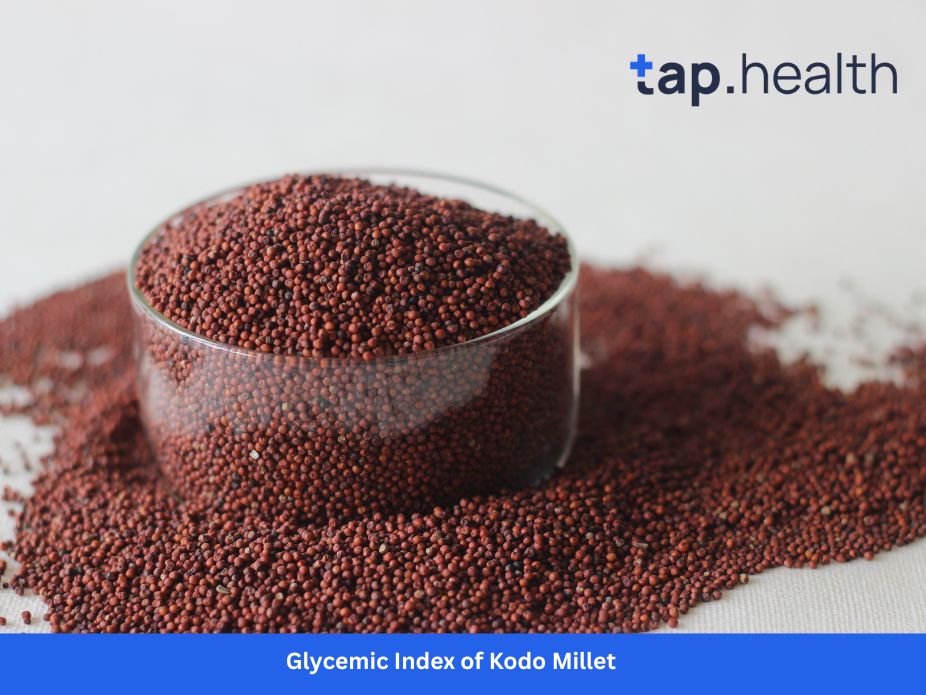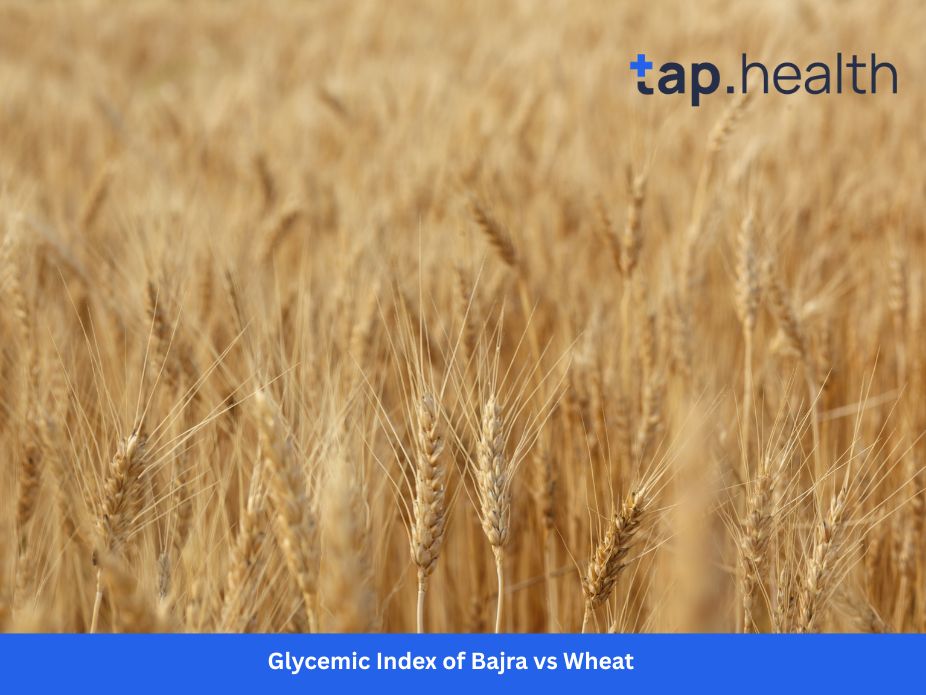Millets have gained popularity as a healthy alternative to traditional grains like rice and wheat, and for good reason. Among these, kodo millet is quickly becoming a favorite, especially for those looking to maintain a healthy lifestyle. But have you ever wondered about the glycemic index (GI) of kodo millet and how it impacts your health?
In this guide, we’ll explore what the glycemic index of kodo millet is, why it matters, and how it can benefit people with diabetes and others striving for a healthier diet. Let’s dive in and discover why kodo millet deserves a spot in your pantry.
What Is the Glycemic Index?
The glycemic index (GI) is a scale that measures how quickly a particular food raises your blood sugar levels after you eat it. Foods with a high GI (above 70) cause a rapid spike in blood sugar, while those with a low GI (below 55) release sugar more slowly, providing a steady and gradual energy boost.
This index is important for people with diabetes or those trying to control their blood sugar levels. By consuming foods with a low GI, individuals can avoid sharp spikes in blood sugar, which can lead to health complications over time.
The Glycemic Index of Kodo Millet
Kodo millet, scientifically known as Paspalum scrobiculatum, is a small, round grain that’s native to India and has been used for centuries in traditional diets. It’s rich in fiber, antioxidants, and essential nutrients, making it an excellent choice for anyone looking to improve their diet. But how does it fare on the glycemic index?
Glycemic Index of Kodo Millet: Low to Moderate
The glycemic index of kodo millet typically falls in the low to moderate range, with a GI of about 50 to 55. This makes it an ideal food for those who need to manage their blood sugar levels, such as individuals with type 2 diabetes or those looking to avoid sudden spikes in their glucose levels.
A low GI means that kodo millet will cause a slower rise in blood sugar compared to high-GI foods like white rice or white bread. This slow release of glucose helps maintain energy levels over a longer period, reducing feelings of hunger and preventing energy crashes.
Why Kodo Millet Is Good for Diabetics
One of the main reasons kodo millet is recommended for people with diabetes is its low glycemic index. Here are a few ways it can benefit those managing blood sugar levels:
1. Prevents Blood Sugar Spikes
Foods with a low GI, like kodo millet, help prevent the sharp increases in blood sugar that can occur after eating high-GI foods. This is crucial for maintaining stable glucose levels, which is key in managing diabetes.
2. Rich in Fiber
Kodo millet is an excellent source of dietary fiber, which slows down the digestion and absorption of sugars into the bloodstream. This further helps to prevent rapid spikes in blood sugar after meals.
3. Better Insulin Sensitivity
Consuming low-GI foods has been shown to improve insulin sensitivity, which means that the body can use insulin more effectively. This is particularly important for people with type 2 diabetes, who often have insulin resistance.
4. Supports Weight Management
The high fiber content in kodo millet also aids in digestion, promoting feelings of fullness and reducing overeating. For people with diabetes, maintaining a healthy weight is crucial for managing blood sugar levels.
Health Benefits of Kodo Millet
Kodo millet offers numerous health benefits beyond just its impact on blood sugar. Here are some key advantages:
1. Nutrient-Rich
Kodo millet is packed with essential nutrients, including protein, iron, magnesium, calcium, and B-vitamins. These nutrients help support overall health and can help reduce the risk of chronic diseases.
2. Good for Heart Health
Kodo millet is known to help lower cholesterol levels, thanks to its high fiber content. By managing cholesterol and promoting heart health, it can help reduce the risk of cardiovascular diseases.
3. Antioxidant Properties
This millet contains powerful antioxidants that protect the body from oxidative stress and inflammation, both of which are linked to chronic diseases like cancer and diabetes.
4. Improves Digestive Health
The fiber in kodo millet not only helps stabilize blood sugar but also aids in digestion. It can improve gut health by promoting regular bowel movements and preventing constipation.
5. Gluten-Free
Kodo millet is naturally gluten-free, making it an excellent choice for those with gluten sensitivities or celiac disease.
How to Include Kodo Millet in Your Diet
Now that we know the benefits and glycemic index of kodo millet, how can you add it to your meals? Here are some easy and tasty ways to include kodo millet in your diet:
1. Kodo Millet Porridge
Start your day with a nutritious kodo millet porridge. Simply cook the millet in water or milk, add your favorite toppings like fruits, nuts, and honey, and enjoy a filling breakfast.
2. Kodo Millet Salad
For a refreshing lunch, try a kodo millet salad. Cook the millet and mix it with vegetables like tomatoes, cucumbers, and bell peppers. Add a dressing of olive oil, lemon, and herbs for flavor.
3. Kodo Millet Upma
This savory South Indian dish is a great way to enjoy kodo millet. Cook the millet with mustard seeds, curry leaves, chopped vegetables, and spices for a healthy and delicious meal.
4. Kodo Millet Rotis
If you prefer traditional flatbreads, try making kodo millet rotis. Mix the millet flour with water and knead it into dough, then roll it out and cook it on a griddle for a gluten-free alternative to wheat roti.
5. Kodo Millet Pulao
For a simple dinner, make kodo millet pulao. Cook the millet with vegetables, herbs, and spices to create a hearty and satisfying dish.
Other Millets and Their Glycemic Index
While kodo millet is a great option for those looking to manage their blood sugar levels, it’s important to know how it compares to other types of millet. Here’s a quick look at the GI of some other popular millets:
- Finger millet (Ragi): Low GI of around 50
- Pearl millet: GI of about 55-60
- Foxtail millet: GI of about 50-55
- Little millet: GI of about 50-55
As you can see, kodo millet compares favorably to other types of millet in terms of its glycemic index, making it a smart choice for those looking to improve their diet.
Conclusion
Kodo millet is a nutrient-packed, low-GI food that can help maintain stable blood sugar levels, making it an excellent choice for diabetics and anyone looking to improve their diet. With its high fiber content, antioxidant properties, and heart-healthy benefits, kodo millet is a fantastic addition to any meal plan. By incorporating kodo millet into your diet, you can enjoy better blood sugar management and a host of other health benefits.
FAQ on Glycemic Index of Kodo Millet
1. Is the glycemic index of kodo millet lower than rice?
Yes, kodo millet has a glycemic index of around 50 to 55, which is much lower than white rice, which typically has a GI above 70. This means kodo millet causes a slower rise in blood sugar levels, making it a better choice for diabetics.
2. Can kodo millet help in weight loss?
Yes, kodo millet can support weight loss efforts due to its high fiber content, which promotes satiety and helps control appetite. It also has a lower glycemic index, which means it doesn’t cause rapid spikes in blood sugar.
3. Can I eat kodo millet every day?
Yes, you can eat kodo millet every day as part of a balanced diet. It’s a healthy, low-GI food that provides essential nutrients and can be included in various dishes.
4. Is kodo millet gluten-free?
Yes, kodo millet is naturally gluten-free, making it an excellent choice for people with gluten sensitivities or celiac disease.
5. How do I cook kodo millet?
To cook kodo millet, rinse it thoroughly, then cook it in water or broth. The typical ratio is 1 cup of millet to 2 cups of water. Bring the water to a boil, then reduce the heat and simmer until the millet is tender, which usually takes about 15-20 minutes.
By adding kodo millet to your diet, you can enjoy better blood sugar control, improved digestion, and a nutrient-rich, gluten-free option for a variety of meals. It’s not only good for diabetics but also for anyone looking to improve their health and make better dietary choices.



